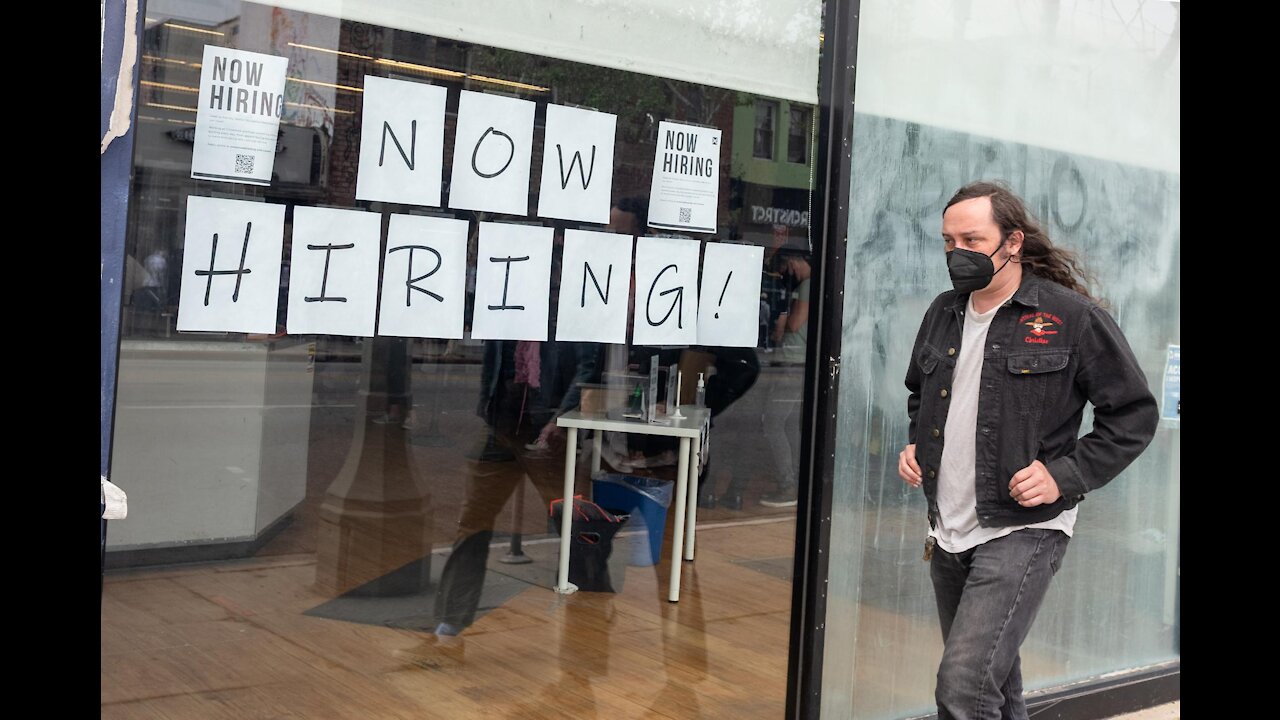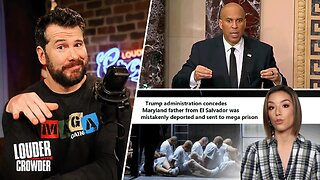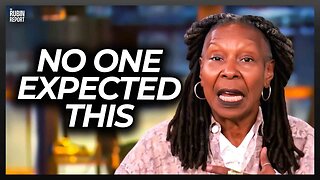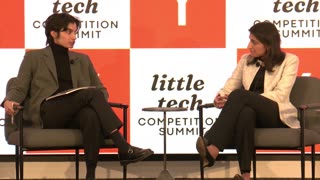Premium Only Content

Some states are ending the 'unemployment boost', it is long overdue but can be phased in by industry
#Montana #SouthCarolina #Unemployment #Boost #Jobs
Calls to cancel pandemic-era unemployment benefits intensified this week as worries over a labor shortage gained steam, culminating in a crescendo on Friday after a wildly disappointing jobs report for April.
South Carolina and Montana announced plans before the report to end the jobless programs at the end of July, after weeks of local reports across the country recounted how restaurants couldn’t fill positions.
After the jobs report on Friday, the U.S. Chamber of Commerce announced its support of stopping the extra $300 in weekly unemployment benefits, citing worker shortages, while Sen. Roger Marshall (R-KS) introduced a bill to repeal the pandemic unemployment programs.
“While there are certainly people that needed access to increased unemployment benefits during the heart of this pandemic, we should not be in the business of creating lucrative government dependency that makes it more beneficial to stay unemployed rather than return to work,” Marshall said in a statement on Friday.
What's to blame for the disheartening job performance in April, though, has no consensus among economists. After payroll gains missed by over 700,000 — 266,000 jobs were added last month versus estimates of 1 million — a firestorm on Twitter ignited among economists and analysts, who largely agreed that tightness in the labor market existed, but argued over the culprit.
Complicating matters is that the jobs recovery is not occurring in a vacuum, but amid a public health crisis that introduces multiple variables.
‘A real sign of labor market tightening or even shortages’
While there is no single measure for workforce shortage, increased work hours and wages are considered some of the signs that indicate employers are struggling to fill jobs and the labor market is tightening, according to Heidi Shierholz, senior economist and director of policy at the Economic Policy Institute. Both occurred in April.
Average weekly hours for workers in leisure in hospitality significantly increased in April, reaching 26.7 hours, up from its pre-pandemic levels of 25.8 hours in February 2020, according to data from the Labor Department.
up the hours of the workers,” Shierholz told Yahoo Money.
Average hourly earnings for workers in labor and hospitality also increased to $17.88 in April, up from their pandemic low of $16.92 in July and are higher than their pre-pandemic level of $16.90 in February 2020, according to data from the Labor Department.
Some economists pointed to the increase as a sign that employers are competing with the enhanced unemployment benefits, specifically the extra $300 a week that the Chamber of Commerce said “results in approximately one in four recipients taking home more in unemployment than they earned working."
Shierholz noted that the wage increases in some sectors may not be robust enough. For instance, nonsupervisory workers in leisure and hospitality still make less than $21,000 a year after wage increases, according to Shierholz, or about $10 an hour.
“While there's definitely signs of isolated and temporary tightness in the labor market,” Shierholz said, “a lot of the huge complaints that we're seeing really are about businesses being frustrated that they can't find workers at extremely low wages.”
Making it more difficult to pin blame is the pandemic itself that has disrupted American life in ways unlike a typical downturn. Factors like remote schooling and limited child care options ripple through the economy, especially affecting female workers. The details of April’s job report back this up.
“There was a big increase in the labor force in April, [but] it was entirely among men,” Shierholz said. “That doesn't scream that it's an unemployment benefits issue, it really does scream that it's something like care-giving responsibilities in the time of COVID.”
The number of women in the labor force fell by 64,000 in April, while the number of men increased by 493,000, Michael Madowitz, an economist at American Progress, pointed out to Yahoo Money.
“If there is a labor shortage, it's all about women,” Madowitz tweeted on Friday after the jobs report.
Where hiring fell also provides another clue. Leisure and hospitality actually added 331,000 jobs in April, but manufacturing saw payrolls drop by 18,000, specifically a 27,000 decline in auto production, which could be related to the national chip shortage.
Additionally, fears over the public health situation may be holding some workers back, Shierholz said. Covid vaccines were not available to all adults until April in 33 states — the others didn’t open until mid- to late March — meaning those who received the Pfizer or Moderna shots had to wait five to six weeks before becoming fully vaccinated.
-
 1:02:24
1:02:24
Timcast
2 hours agoGOP CRUSHED In Wisconsin, Trump Impeachment FEARED After Dems Win, Voter ID PASSES
120K98 -
 2:05:58
2:05:58
Steven Crowder
5 hours ago🔴 Why the Deported El Salvador Father Story Is One Huge Media Lie!
333K222 -
 58:31
58:31
The Rubin Report
3 hours ago‘The View’s’ Whoopi Goldberg Shocks Crowd by Going Even Further Left
53.4K100 -
 19:10
19:10
Neil McCoy-Ward
1 hour ago🔥 While Υοu're Working HARD, They're ΡLΑNNING To ΤΑKE Everything From Υou!
10.5K3 -
 12:01
12:01
IsaacButterfield
9 hours ago $0.14 earnedThe Worst Of Gen Z TikTok
8929 -
 8:52
8:52
RTT: Guns & Gear
10 hours agoThe Most Customizable EDC IWB Holster? Werkz Holsters Bisect
1801 -
 40:27
40:27
The Boomer Effect
20 hours agoHow the Biggest Con of the Century Almost Toppled Higher Education
17 -
 LIVE
LIVE
LFA TV
15 hours agoLFA TV - ALL DAY LIVE STREAM 4/2/25
1,799 watching -
 LIVE
LIVE
Y Combinator
5 hours agoY Combinator Little Tech Competition Summit - Washington DC
204 watching -
 LIVE
LIVE
Scammer Payback
2 hours agoCalling Scammers Live
217 watching